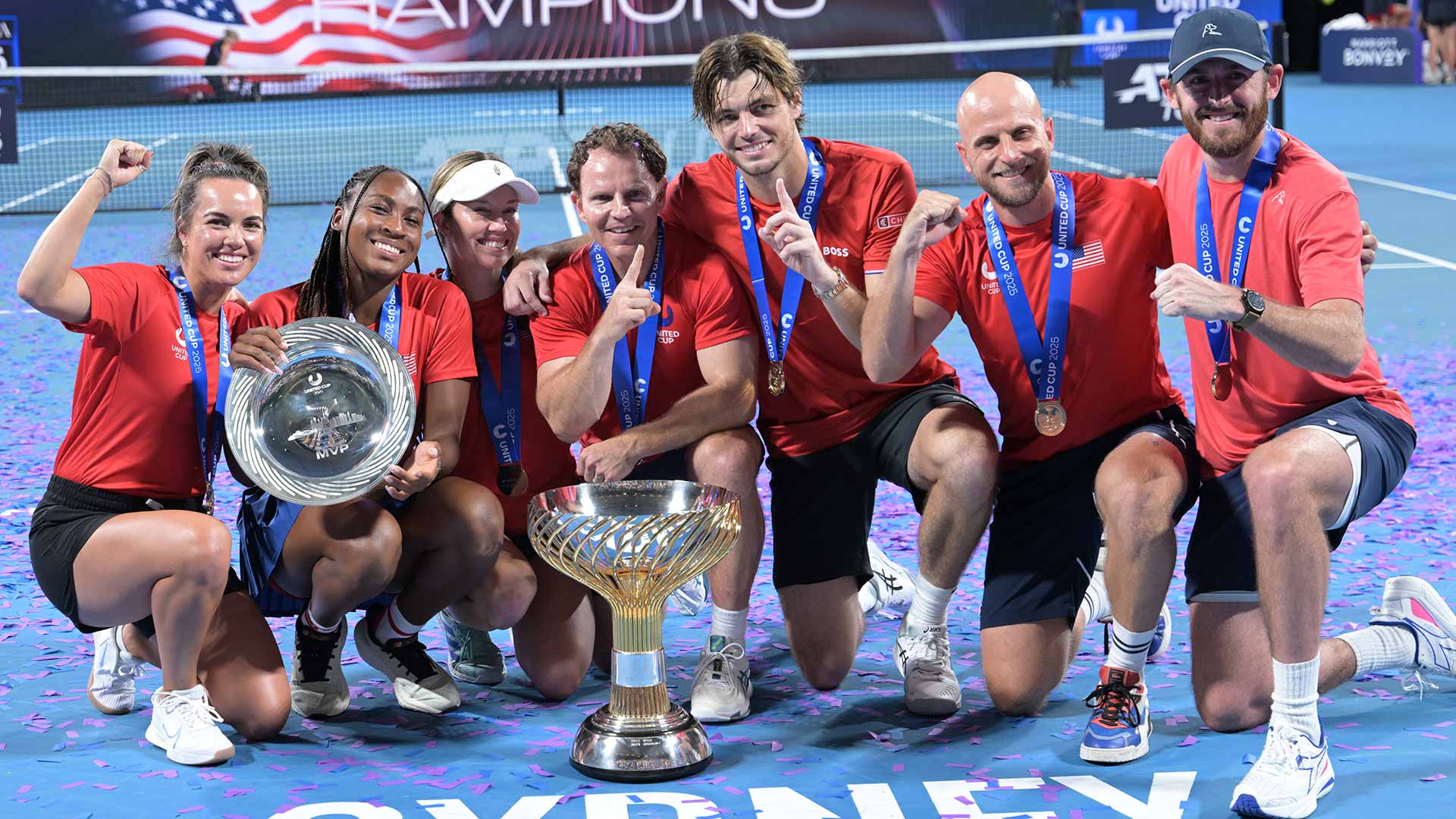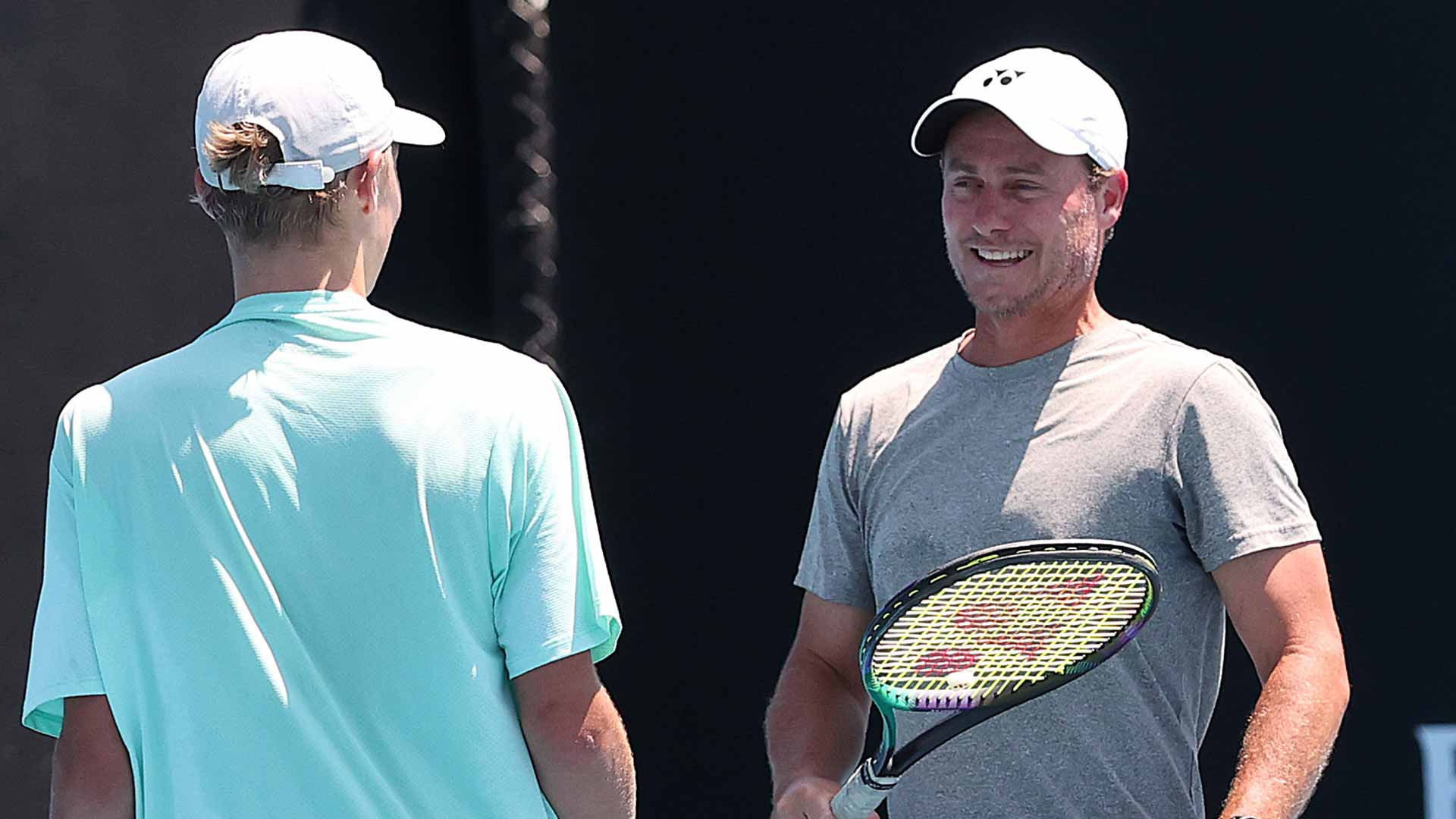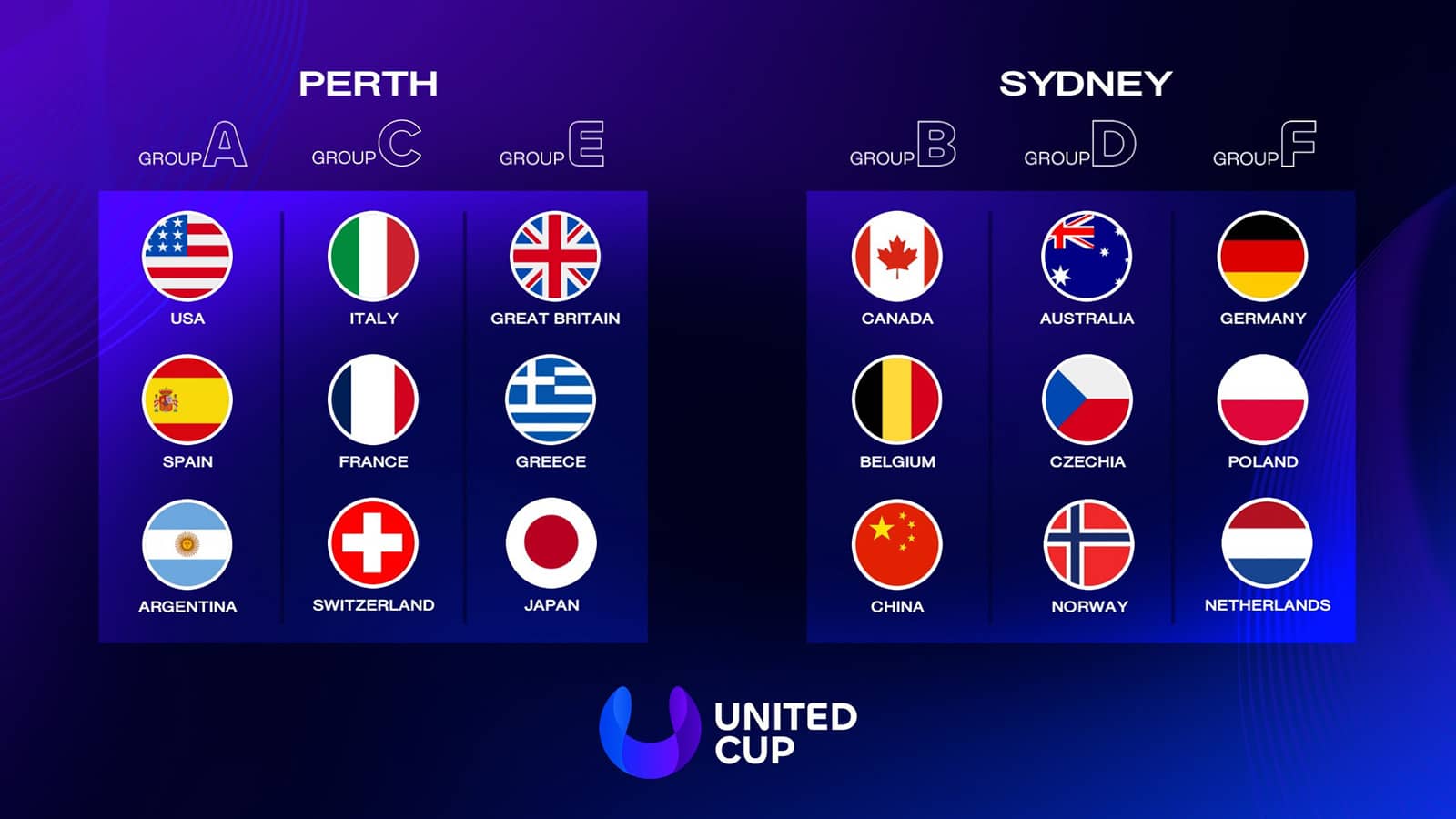United Cup 2026 Sparks Season-Opening Intensity
Fresh off the schedule reveal, the United Cup 2026 lines up powerhouse nations for mixed-team showdowns that will probe mental toughness and tactical sharpness on Australian hard courts, priming stars for the Australian Open ahead.

The United Cup schedule for 2026 lands like a perfectly placed drop shot, pulling the world's elite into a whirlwind of team ties just as the new year dawns. This fourth edition of the innovative mixed-team event runs from January 2 to 11, blending singles precision with doubles urgency across Perth and Sydney's indoor arenas. With five top-10 men and four top-10 women committed, including Alex de Minaur, Coco Gauff, Taylor Fritz, Iga Swiatek, Alexander Zverev, Jasmine Paolini, Felix Auger-Aliassime, and Jack Draper, the early clashes promise to expose who thrives under collective pressure and who buckles.
Perth's group stage forges early resolve
At RAC Arena, the action erupts on Friday, January 2, with day sessions starting at 10:00 a.m. and nights at 5:00 p.m. local time, the cool morning air giving way to packed stands alive with chants. Team USA, the top seeds, launches Group A against Argentina on Saturday, January 3, where Fritz's inside-out forehands could carve through defenses on the medium-fast surface, but the tie's mixed doubles might hinge on quick transitions that test partnerships from the outset. Greece faces Japan that opening night in Group E, Stefanos Tsitsipas's versatile slice underspin clashing against Japan's disciplined crosscourt patterns, a matchup where emotional investment from the crowd could amplify every unforced error into a momentum shift.
Italy meets Switzerland on Sunday night, January 4, in Group C, Paolini's agile movement countering Bencic's flat returns in women's singles, while the men's side draws on Italy's depth with Flavio Cobolli probing for weaknesses in a 1–2 rhythm. Great Britain battles Japan that afternoon, Jack Draper's rising power pushing down-the-line winners against precise counters, the psychological edge tilting toward whoever masters the indoor bounce first. The next day, USA takes on Spain, Fritz adapting to Spain's baseline speed with aggressive net poaches, followed by Britain's evening clash with Greece, where Tsitsipas's one–two combinations might exploit any lapses in focus amid the roaring atmosphere.
Other Perth teams like France round out the groups, the format's best-of-three tiebreak sets for singles keeping points taut and revealing early-season adjustments. Standouts such as Stan Wawrinka for Switzerland bring veteran poise to mixed doubles, his experience in two-set tiebreak formats with a 10-point decider potentially steadying nerves when fatigue sets in. These encounters, fueled by national fervor, turn individual shots into team narratives, setting a tone of resilience that echoes through the week's grind.
Sydney's arenas amplify home momentum
Eastward at Ken Rosewall Arena, the group stage spans Saturday, January 3, to Wednesday, January 7, with days kicking off at 10:30 a.m. and evenings at 5:30 p.m., the humid air adding subtle grip to every slide and stretch. Australia, powered by de Minaur alongside Maya Joint, Jason Kubler, Maddison Inglis, Storm Hunter, and John-Patrick Smith, opens Group D against Casper Ruud's Norway that Saturday night, de Minaur's directional changes inside-out challenging Ruud's heavy topspin in a tie where home support might fuel extended rallies into the mixed doubles decider. The hosts then face Czechia on Tuesday, January 6, demanding depth in doubles to counter Czech aggression on a surface that rewards consistent depth over explosive pace.
Canada squares off with China on Sunday night in Group B, Auger-Aliassime's all-court versatility testing China's baseline solidity, perhaps with tactical underspin to disrupt patterns if the bounce proves true. Germany collides with Poland that Monday night in Group F, Zverev's towering serves targeting Swiatek's defensive returns in a women's showcase that blends power with precision, the men's singles amplifying the tie's stakes through crosscourt exchanges. Canada follows with Belgium on Tuesday day, while Australia's Czechia matchup that evening highlights the host's arc, the crowd's energy pushing players to refine their one–two punches under lights.
Teams like the Netherlands and Belgium fill out Sydney's draw, the event drawing further firepower from Naomi Osaka, Emma Raducanu, Belinda Bencic, Jakub Mensik, and Maria Sakkari, each navigating the psychological layers of team play. Gauff's explosive returns for USA, though in Perth, underscore the women's depth, while Sakkari's down-the-line winners for Greece add emotional layers to cross-city narratives. These Sydney battles, alive with local pride, force adaptations that could define a player's early rhythm, turning potential vulnerabilities into strengths before the knockouts.
Quarterfinal path tests collective grit
Group winners from each city, plus the best runner-up, advance to quarterfinals—Perth's on Wednesday, January 7, and Sydney's across Thursday, January 8, and Friday, January 9—escalating the pressure as squads relocate for Sydney semifinals on Saturday, January 10, and the final at 5:30 p.m. on Sunday, January 11. The travel day and rest before semis offer a tactical breather for string tweaks or pattern drills, but the format's compressed sets demand unflinching focus, especially in mixed doubles where alliances under fatigue can swing ties. Wawrinka's steady hand or Mensik's youthful fire might prove pivotal, their contributions weaving individual tactics into team survival on hard courts that punish hesitation.
Tickets for the group stage go on sale Wednesday, November 19, at 12:00 p.m. local time, starting from $43 in Perth and $40 in Sydney, with kids entering free on January 3 in both cities—a draw for families to catch the electric start. As de Minaur charges at home or Swiatek anchors Poland, the United Cup emerges as a forge for the season, where early triumphs build unbreakable momentum and setbacks sharpen resolve for the majors ahead. This blueprint not only maps the draws but charts the mental terrain, pulling players into a narrative of pressure that will resonate through the year's defining battles.


